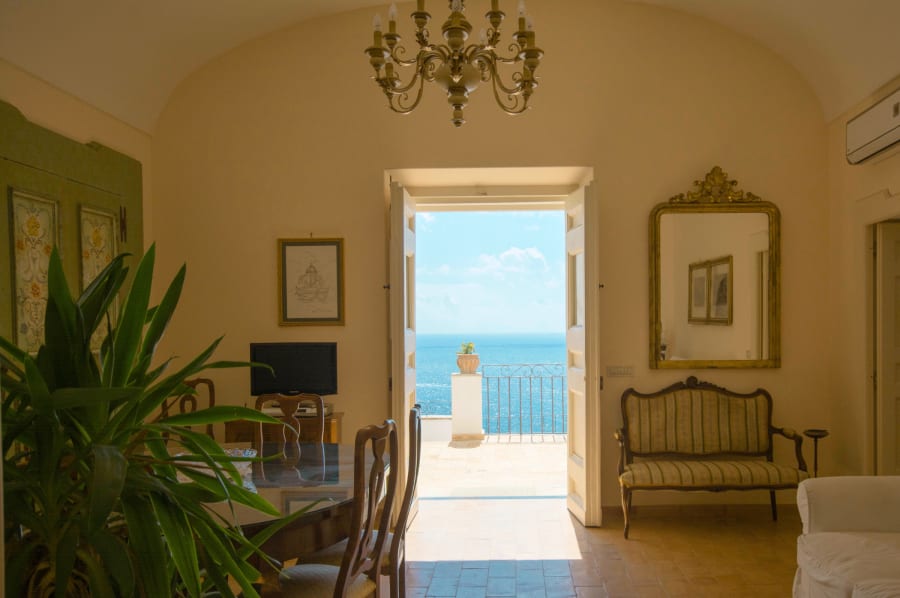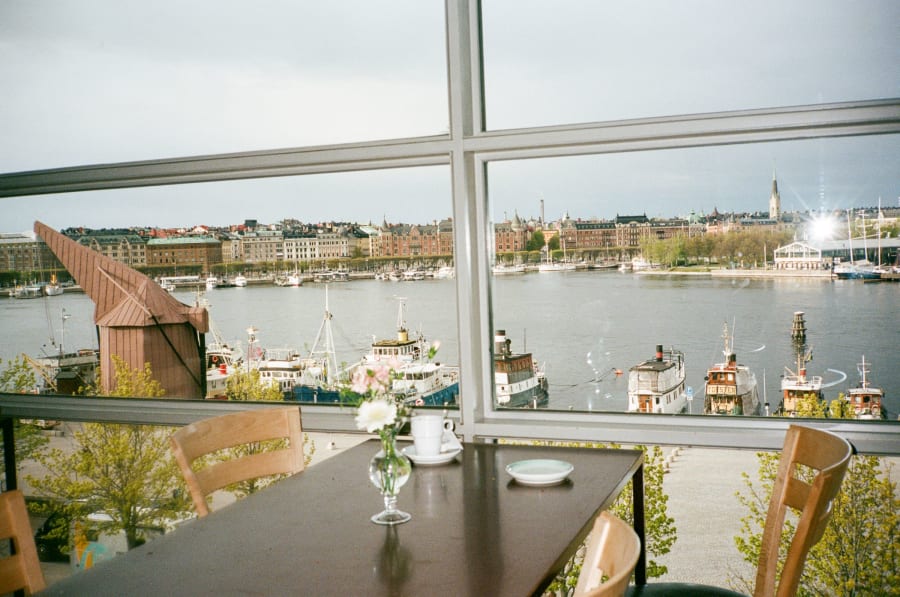Perched on picturesque hills overlooking the mouth of the Tagus River with the Atlantic Ocean beckoning beyond, Lisbon is especially blessed by geography. From here, mariners in the employ of kings set sail in the 15th century to explore the Atlantic coast and build Portugal into a trading empire. Lisbon soon became known as the capital of the first age of globalization, its influence captured in The King’s Fountain (ca. 1570), a painting by an anonymous Flemish artist depicting the Portuguese city as a melting pot where African knights on horseback mingled with European traders.
Fast forward to today: This same cosmopolitan vibe is once again tangible on Lisbon’s streets. Fueled by a boom in tourism and a surging property market, the Portuguese capital has awakened from a long slumber to become a dynamic city with a growing number of expats settling here in recent years. One key beneficiary of this influx has been Lisbon’s art scene, as new galleries, together with private foundations and public investments, have begun to turn the Lusophone metropolis into a cultural hotspot.
Arrivals in the past decade include tech professionals, digital nomads, foreign retirees, and international businesspeople, all of whom see the city, with its abundance of sunshine and proximity to beaches, as an ideal basecamp. One transplant is Milan native Matteo Consonni, founder of Madragoa gallery, which opened in 2016. ‘When I first arrived, the contemporary art scene was more inward-focused. Thanks to the influx of outsiders, we now see a more vibrant environment,’ remarks Consonni, who currently represents 14 artists, including emerging talents like Italy’s Emilio Gola, whose paintings capture today’s youth in vivid color.
Housed in a building with a heavyset stone facade, Consonni’s gallery overlooks a dynamic, buzzy street. Inside, the venue’s streamlined design includes an office decorated in hues of pink and red, thanks to a friendship with designer Ab Rogers, son of famed architect Richard Rogers. ‘This new milieu, enhanced by creative types from abroad taking up residence, has given the city fresh stimulus and broadened horizons,’ he says. Consonni sees this reflected in the institutional exhibitions now on view: This summer, the Museum of Art, Architecture, and Technology has mounted a show dedicated to the photographs of Canadian artist Jeff Wall.
In the Encounters sector, dedicated to large-scale installations, Kim’s gallery reintroduced the late Filipino artist Pacita Abad’s practice to an Asian audience with Through the Looking Glass (1996); the monumental installation sold to a museum in Southeast Asia for USD 500,000. Also in Encounters, three works by the First Nations artist Betty Muffler were sold by Ames Yavuz (Singapore, Sydney, London), all in the range of USD 40,000–60,000, and Property Holdings Development Group (Hong Kong) sold a piece by Christopher K. Ho to a major corporate collection. De Sarthe (Hong Kong), meanwhile, saw great success with NFTs and editions by the Chinese artist Lu Yang’s digital alter ego, Doku. The acquisition of Yang’s all-encompassing Encounters installation – DOKU the Creator (2025) – was being negotiated, with multiple institutions expressing strong interest, but the sale had not yet been confirmed at the time of publication.
Despite some trepidation in the international market, sales to institutions and collections abroad made a strong return this year. The Chinese space Star Gallery (Beijing) sold Zhang Wei’s oil-on-paper Jingshan Front Street, Beijing (1974) for USD 11,050 to the Tate Modern. San Francisco’s Jessica Silverman gallery sold two new pieces by the Indian artist Rupy C. Tut for USD 40,000 each, with one going to a Bay Area institution. And the Bologna gallery P420 sold five historical works by the German Italian artist Irma Blank to private collections in Hong Kong, China, Italy, Germany, and Colombia, with prices ranging from USD 8,500 to USD 32,000.
With a growing number of outsiders putting down roots, a real transformation is underway, according to Portuguese artist Mariana Horgan, whose work – which combines painting, drawing, sculpting, and collage with raw forms of etching, such as woodcut – casts her as a disciple of Cy Twombly. ‘Lisbon is catching up with the other great capitals of contemporary art, with new galleries and museums that are more open and inviting. It feels fresher and more dynamic,’ explains Horgan, whose latest exhibition, ‘Primeiro Gesto’ (First Gesture) at Galeria Belard, sees her install a blank canvas into the exhibit as an invitation to the public to intervene and leave their marks on it, before she returns each week to finalize the artwork.
As for new and engaging museums to attract the art-minded, last autumn the respected Japanese architect Kengo Kuma unveiled his newly completed Centro de Arte Moderna Gulbenkian, which houses an important collection of modern and contemporary Portuguese art. This spring, veteran Portuguese collector Armando Martins launched his Museu de Arte Contemporânea project – a spacious museum and upscale hotel that sits inside a renovated 18th-century palace close to the riverside. Guestrooms and communal spaces show off the collection that Martins has built up over half a century and which contains pieces by artists including Marina Abramović, Daniel Buren, and Olafur Eliasson.
Other venues not focused solely on art have been open to featuring artists too, to engage a wider audience. Portuguese artist Mafalda d’Oliveira Martins, who goes by the moniker MOM, recently had an evocative solo show entitled ‘Paragem’ (Halt) inside the city’s National Museum of Natural History and Science. It featured sculptures and film stills that documented a growing societal problem in Portugal of patients in public hospitals with little economic or family support who, despite being well enough to be discharged, often remain on wards as they have no homes to return to.
Gentrification in downtown Lisbon has played a part in changing the makeup of the city, as rents rise and the working class gets priced out by deep-pocketed newcomers, according to gallerist Pedro Cera. His eponymous gallery dates to 1998 and, over the years, has witnessed a shift in the demographics of visitors. Now operating a second space in Madrid, Cera lays out the differences between the two capitals. ‘Madrid is a metropolis made up of Spanish and Latin Americans, whereas Lisbon today has become truly international. Before, things were very much local. Now we see French, Brazilians, those from North America and Northern Europe. There’s a great diversity.’
Cera sees Lisbon’s appeal unlikely to wane, given its laid-back lifestyle, pleasant weather, and numerous influences drawn from Portugal’s former overseas colonies – be it the cuisine from Goa or music from Cape Verde. For Cristina Guerra, doyenne of the Lisbon gallery scene, whose current roster features 29 artists, 12 of whom are Portuguese, the changes underway are driving Lisbon down the path towards becoming a more influential player in the art world – ARCOLisboa art fair’s increasing appeal to international galleries being a case in point. Still, there is work to be done. ‘With the interest from outsiders wanting to buy homes, the city has become expensive. More artists now look to live outside Lisbon. Then there is the role of the collector. We still haven’t seen the emergence of a new generation ready to step up. That said, there is plenty of promise.’
ARCOLisboa runs from May 29 to June 1, 2025.
Since 2007, Ivan Carvalho has been the Milan correspondent for Monocle magazine. The California native also writes for Departures International and is a contributor to The Quarter Share magazine by NetJets as well as food and wine publications Revista de Vinhos and Revista Gula.
Top image: Cristina Guerra and her team at the gallery, May 2025. Photography by Matilde Viegas for Art Basel.


